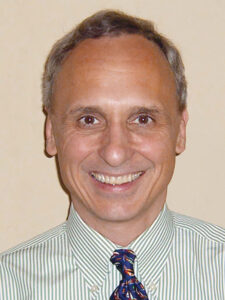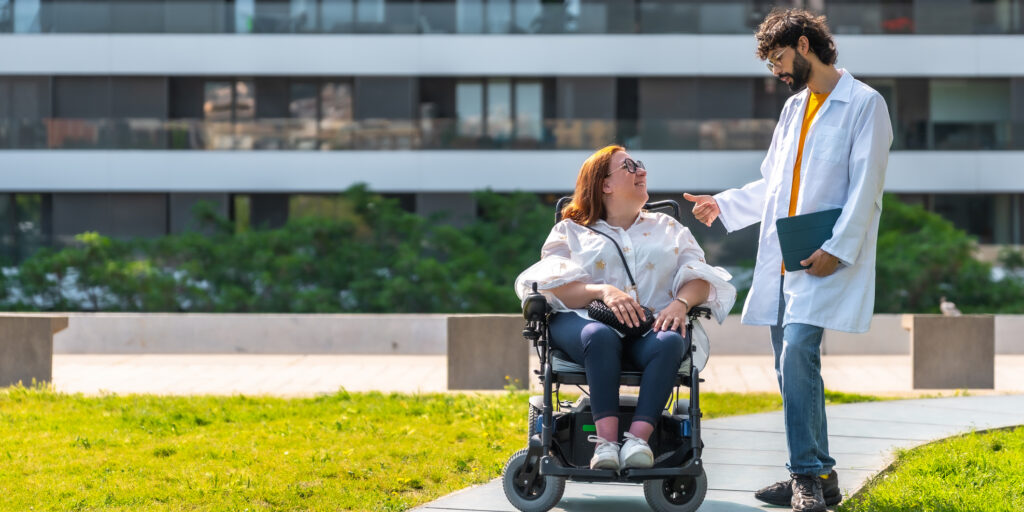
Advances in the Treatment of Friedreich Ataxia
By MDA Staff | Tuesday, August 8, 2023
Friedreich ataxia (FRDA; sometimes called FA) is a neuromuscular disorder that affects about one in 50,000 people or about 8,000 people in the United States. The symptoms usually appear in childhood but can first appear in adults up to their 40s.
The primary symptoms include muscle weakness in the arms and legs, difficulty with balance and walking, and loss of sensation in the arms and legs, all of which grow worse over time. Many people with FRDA also experience heart problems.
Quest talked with two physicians who treat and conduct research into FRDA. Barry Byrne, MD, PhD, is the Associate Chair of Pediatrics and Director of the Powell Gene Therapy Center at the University of Florida. David Lynch, MD, PhD, is Professor of Neurology at Perelman School of Medicine at the University of Pennsylvania and a neurologist at Children’s Hospital of Philadelphia.
What are the first signs of FRDA?

David Lynch, MD, PhD
Dr. Lynch: It usually starts with ataxia — meaning difficulty with balance — most commonly between the ages of 5 and 15. About 20% of people present after age 15, and maybe 1% or 2% before age 5. A few people are identified because they have scoliosis in their early teenage years. A small number of people are identified when they are very young because they have symptoms, including chest pain and shortness of breath, indicative of hypertrophic cardiomyopathy, which is a thickening of the heart that makes it difficult to pump blood.
What causes the disorder?
Dr. Lynch: FRDA is a genetic disease. It’s autosomal recessive, so each parent is a carrier of one frataxin (FXN) gene mutation, but the parents do not have the disease. A child gets one mutated gene from each parent, and the mutation leads to a failure to produce sufficient levels of the protein frataxin.
Dr. Byrne: Frataxin is important for the proper function of mitochondria, which produce energy for cells to function. The deficit in energy production means that some cells do not function normally and some cells die. When neurons die, they’re not replaced. In the heart, muscle cells enlarge to compensate for the weakness that comes from the loss of frataxin. This leads to more severe complications in patients in their 20s and older, when they experience heart rhythm abnormalities and early mortality. Before that, many early-onset patients lose their ability to walk.

Barry Byrne, MD, PhD
The US Food and Drug Administration (FDA) recently approved a new treatment for FRDA. What should people know about it?
Dr. Lynch: Omaveloxolone goes by the brand name Skyclarys. In double-blind clinical trials, this drug improved people’s neurologic function and appeared to slow the progression of the disease. It’s been approved for people ages 16 and older with FRDA.
Dr. Byrne: This drug is specifically designed to influence some of the metabolic abnormalities associated with the frataxin mutation and is intended to preserve the neurons’ function. We expect the FDA to extend the treatment to even younger individuals over the next few years.
Are there any new treatments on the horizon?
Dr. Byrne: There are some other approaches that are meant to increase the level of frataxin protein. They’re in the very early stages, so there’s not extensive data on those approaches yet. New drug therapies may have additional benefit when used in combination. The approach I am most excited about is to restore frataxin expression by gene therapy.
Dr. Lynch: One medicine, PTC 743, had some positive results recently in its clinical trial, but it didn’t reach the primary endpoint. We will see whether it moves forward. It was most effective at reducing fatigue, which is a big issue with FRDA. There is also a drug from Design Pharmaceuticals whose basis is to turn the defective gene back on so that people make normal levels of frataxin again. It’s in early trials at this point, but it’s very positive. We have good data to suggest that approach may be useful in the long-term.
How do people manage the challenges of living with FRDA?
Dr. Byrne: Besides the gait abnormality, patients may have secondary problems, such as difficulty with speaking and coordinating language. Some patients develop diabetes and problems with vision and hearing loss. It’s a complex set of problems, but amazingly, the patient community with FRDA is extraordinary and extraordinarily resilient. They remain very optimistic about their current care and future options to improve their quality of life.
Next Steps and Useful Resources
- Browse our library of disease-specific content at MDAQuest. org/diseases-a-z.
- The neuromuscular disease treatment landscape is constantly changing. Listen to a conversation with a neurologist about innovations and advances at MDAQuest.org/podcast/neuromuscular-care.
- Stay up-to-date on Quest content! Subscribe to Quest Magazine and Newsletter
TAGS: Clinical Trials, Drug Approval, Featured Content, Gene Therapy, Innovation
TYPE: Featured Article
Disclaimer: No content on this site should ever be used as a substitute for direct medical advice from your doctor or other qualified clinician.




